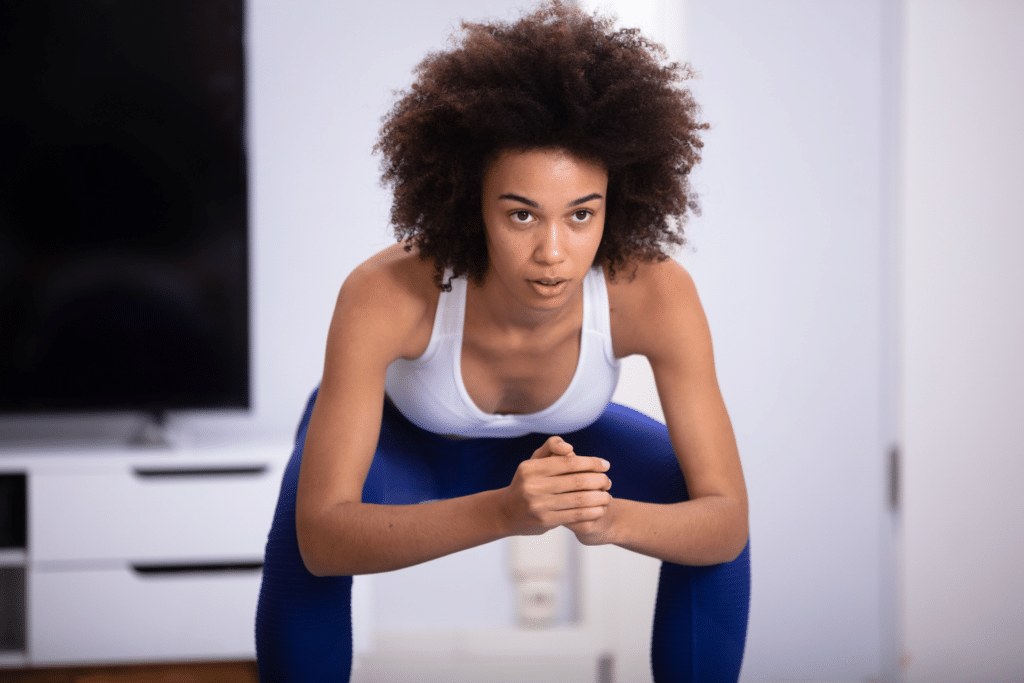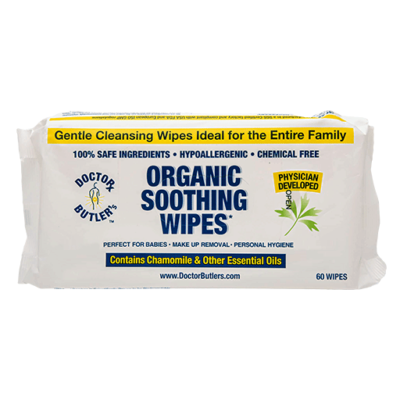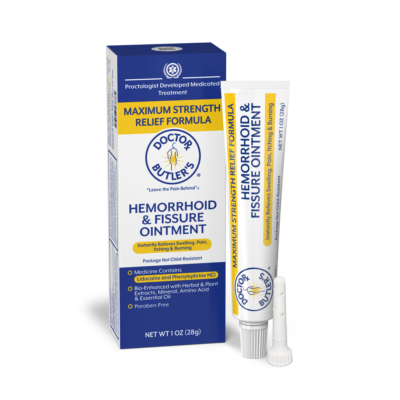Deadlifting is habit-forming. Some lifters will invest thousands of dollars in setting up a home gym just to have it nearby. As much as a powerlifter works to avoid injuries with proper form, they do happen.
And while we expect injuries to happen in the back or neck, they do occur in places we may not think about. One of those places is in our backside, and we’re not talking about glutes here – we mean hemorrhoids.
One of the main causes of hemorrhoids is muscle strain. Whether this strain happens while at the gym or in the bathroom the big question is: is it okay to keep lifting with a case of hemorrhoids and how can we prevent it from happening again in the future?
If your body is hemorrhoid-prone, it can be a challenge to do weightlifting and squats. Exercise is important because it promotes circulation that prevents hemorrhoids in the first place. If you can continue, you should. We’ll share some tips on how to manage powerlifting and do squats with hemorrhoid issues.
What Are Hemorrhoids?
Hemorrhoids (also called “piles”) form due to vein swelling along the wall of the rectum. This happens when pressure is placed on one or more veins. The Mayo Clinic puts hemorrhoids into three categories:
- External: The hemorrhoids form under the skin around the anus.
- Internal: The hemorrhoids form inside the anus.
Symptoms:
- Itching around the anus.
- Irritation in the anal region.
- Discomfort, pain, or swelling.
- Bleeding
Symptoms:
- Bleeding without pain – bright red blood on the toilet tissue or in the commode.
- Potential for hemorrhoids to become prolapsed or protrude which creates pain or irritation.
- Thrombosed: Clot caused by blood pooling in external hemorrhoids.
Symptoms:
- Severe pain and swelling
- Inflammation
- A hard lump near the anus.
How long a hemorrhoid flare-up lasts depends on the extent of the trauma. With mild cases, hemorrhoids clear up in a few days. However, a progressed case of hemorrhoids could persist for weeks. If the hemorrhoids haven’t improved after about a week, reach out to a healthcare professional.
What are the Risk Factors of Hemorrhoids?
The anus and rectum are set up to handle normal bowel movements. When stools are hard, the area is vulnerable to injury from excess pressure. A poor diet and dehydration cause constipation and hard stools.
Forcing a hard stool causes the straining that leads to hemorrhoid problems. Getting plenty of fluids and eating a high fiber diet normalizes bowel movements.
However, loose stools can also cause hemorrhoids. Sitting on the toilet for too long puts pressure on the rectum and anus. The more time you spend on the toilet, the more susceptible you are to hemorrhoids. This may happen with more frequent toilet use due to diarrhea (or the distraction of entertainment brought to the toilet).
When dealing with hemorrhoids, going to the bathroom can be dreadful. We recommend keeping wipes on hand as an alternative to toilet paper at home or in the gym because wiping with regular toilet tissue can make inflamed hemorrhoids worse. Our ultra-soft wipes are hypo-allergenic and designed to soothe skin naturally. Get two packs – one to keep near the toilet at home and one for on the go!
“Best Help Ever! This product is better than the prescription my doctor gave. I’m sticking with what works.”
Verified Reviewer
Performing Heavy Squats with Hemorrhoids
Can squats cause hemorrhoids? Heavy squatting puts pressure on your lower half which could be a contributing factor to hemorrhoids problems. But having hemorrhoids doesn’t mean you need to sell your weight set or cancel your gym membership. Try some adjustments when weight lifting or doing squats with hemorrhoids.
Tips For Exercising With Hemorrhoids
- Work on your pelvic floor muscles: One of the many benefits of strengthening your pelvic floor is improved bowel movement. This helps prevent hemorrhoids.
Pelvic floor strength also helps balance out muscle work to avoid straining.
Kegel exercise involves contracting the pelvic floor muscles for three seconds at least 10 times per session. The Mayo Clinic recommends you do three sessions of Kegel exercises per day for maximum benefit.
Tip: Make Kegels part of your warm-up before your workout.
- Do a warm-up: A five to 10 minutes warm-up activity (such as brisk walking or other aerobic activity) helps to reduce the risk of injury.
- Watch your form and breath: Squatting too low puts pressure on the anal area, so set a reasonable limit for how far you dip.
When lifting or squatting, be sure to push air out against your abdominal wall rather than down toward the anus. Don’t rush it. Use slow and controlled movements.
Maintain good posture and avoid straining with a balanced distribution of muscle work.
A hemorrhoid flareup may create an opportunity to work on improving your form with the help of a personal trainer, so ask for guidance if needed.
Make sure you aren’t holding your breath. Breathe out as you lift and breathe in when you lower the weight.
- Reduce weights: Increasing weight is part of the challenge that makes weight lifting fun. But when you are working through a hemorrhoid flareup, it’s wise to reduce the weight for the time being.
Scaling it back helps you relax your core. A reasonable amount of weight is what you can lift comfortably for 12-15 repetitions. Once you’ve healed, safely increase the weight.
- Don’t ignore pain: When working toward a fitness goal, we tend to work through the pain. However, pain is a biological signal that something is wrong. If the area affected by hemorrhoids worsens, it’s best to stop any activity that causes more strain or pressure to the area. Take a timeout and try again a day or two later.
- Take a rest day: Space out your workouts. To avoid injury from muscle strain, take a day off between workouts or alternate days so you don’t work the same muscle groups for two days in a row.
By monitoring your habits and making a few adjustments, you can continue to lift weights or do squats with hemorrhoid problems.
How to Deal with Hemorrhoids
The sooner you heal, the sooner you can resume your normal workouts. Here are some ways to speed up the healing process.
1. Wear Appropriate Clothing
What you wear can make a hemorrhoid problem worse. Clothing can interfere with hygiene or cause further irritation to the affected area. Wear loose breathable clothing. Avoid clothing that rides up (tight underwear, thongs, leggings, bike shorts, etc.) or traps sweat.
2. Keep your Tush Clean
Hygiene is extremely important for the healing process. Keep the affected area clean and dry both before and after workouts.
3. Treat Before and After the Gym
Regular application of a quality topical treatment speeds up the healing process and reduces discomfort during exercise activities.
Doctor Butler’s hemorrhoid ointment is specially formulated to minimize pain as it heals. After cleaning the area, apply the ointment to the hemorrhoids before your workout.
Our ointment will alleviate symptoms so you can enjoy your workout!
“Best Help Ever! This product is better than the prescription my doctor gave. I’m sticking with what works.”
Verified Reviewer4. Maintain a Proper Diet
A poor diet leads to constipation or diarrhea. Making adjustments to your diet improves your bowel movements to reduce your risk of hemorrhoids.
Get plenty of water, reduce consumption of food or drink that causes constipation, and increase your fiber or roughage. Harvard Health recommends that you get 20 to 30 grams of fiber per day.
Don’t Let Hemorrhoids Get in the Way!
Don’t let hemorrhoid pains interfere with your gains! Addressing the problem now keeps it from getting worse.
Exercise should be an enjoyable activity, and the pain from hemorrhoids is very distracting. Adjusting your lifestyle can help you avoid getting hemorrhoids in the first place. If despite your best efforts you still get hemorrhoids, you should begin the healing process right away.
Doctor Butler’s Hemorrhoid & Fissure Ointment is a powerful formula designed by an experienced proctologist. It is specially formulated to expedite the healing process and alleviate the discomfort of hemorrhoids. It’s the strongest ointment you can get without a prescription.
In some cases a visit to the proctologist for hemorrhoids is necessary. If despite your best efforts, hemorrhoid issues become chronic, persist for over a week, or get worse, contact your doctor.


